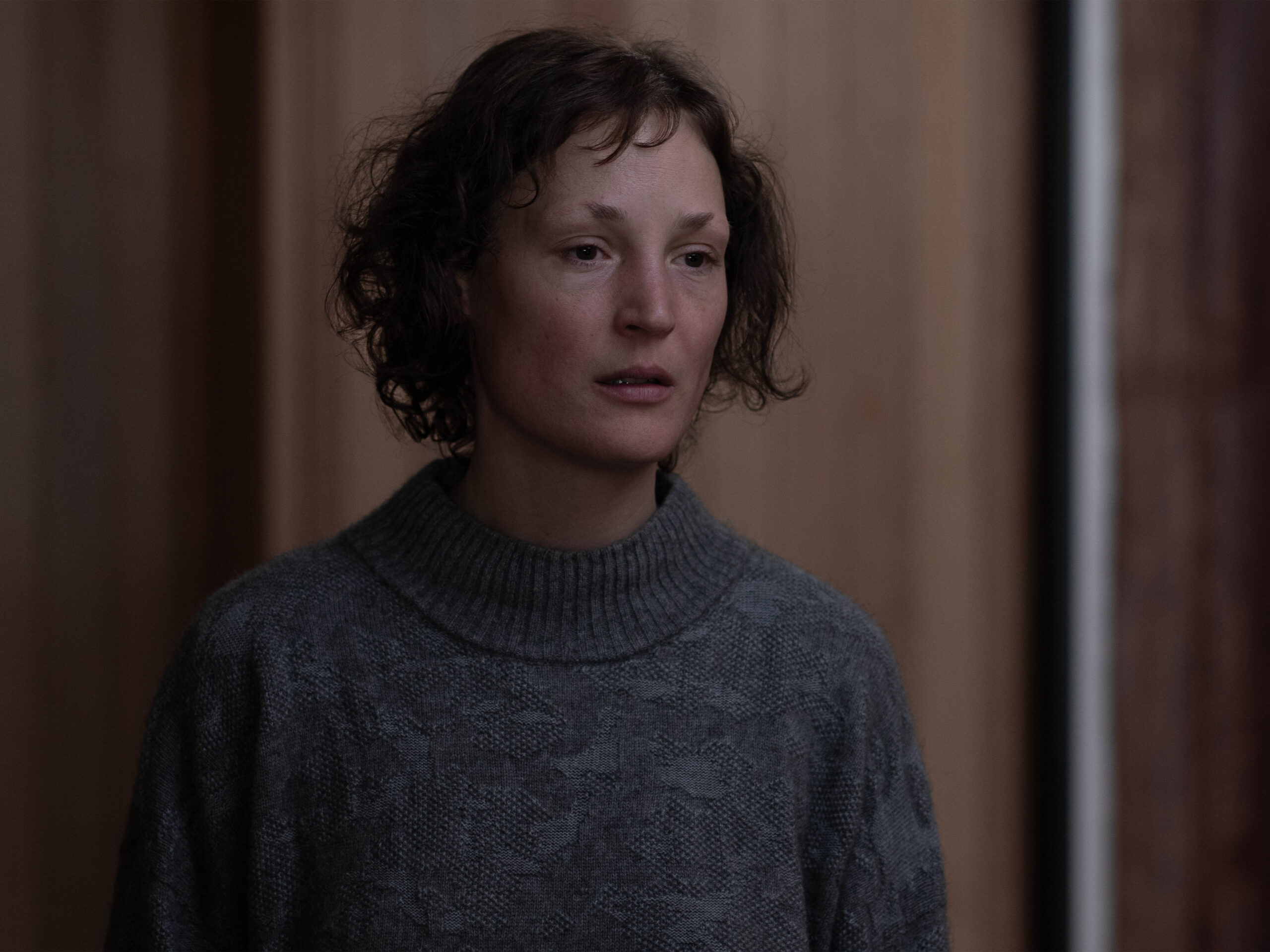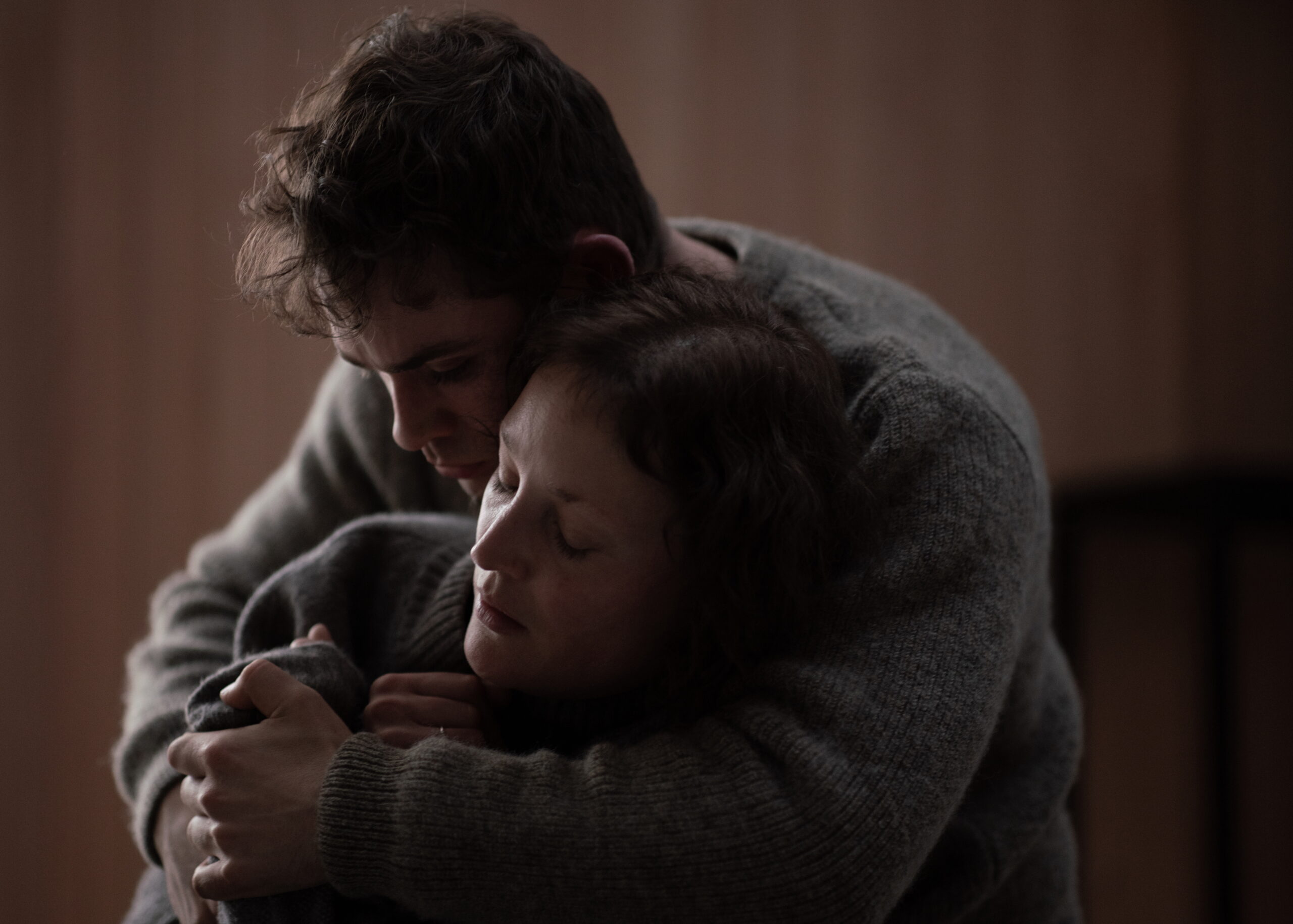Went Up the Hill
Went Up the Hill, 2025, 2 ¾ stars
Death becomes them
Ghost story embraces mood, lacks logic
Exclusive to MeierMovies, August 20, 2025
When Jack, an emotionally fragile 20-something, shows up unexpectedly at the funeral of a woman he barely knew, claiming he was invited, the dead woman’s wife and sister are bewildered, until it’s revealed that the deceased had a power for possessing people metaphorically in life – and, seemingly, literally in death.
They say you can’t make a good movie from a bad script, yet director Samuel Van Grinsven spends 100 minutes proving otherwise. “Bad” is perhaps a bit harsh for Grinsven and Jory Anast’s screenplay, though, so let’s just go with “hard to swallow” and “paper thin,” or perhaps “plodding.” Part ghost story and part tale of possession, Went Up the Hill is just as much psychological drama as suspense, and works, despite the aforementioned issues, because of its atmosphere and excellent performances by Australian actor Dacre Montgomery (Stranger Things) and the always fascinating Vicky Krieps (Phantom Thread, Old, Bergman Island).
 The compelling but brief turn by New Zealand actress Sarah Peirse as the departed’s sister notwithstanding, this is a two-hander. For most of the film, Jack (Montgomery) and Jill (Krieps) are alone in the house Jill shared with her wife, she trying to come to terms with death and he trying to learn why the mother he barely knew abandoned him as a baby. The surreal story, which stretches credibility to the breaking point, might have been better suited to the stage. Yet the movie medium does allow cinematographer Tyson Perkins, along with production designer Sherree Phillips, art director Ben Milsom and set decorator Michelle Freeman, to shine. (It’s not often I mention multiple members of the production crew in a review, but because of the spare and implausible story, Went Up the Hill succeeds largely because of them, plus Grinsven’s ability to keep us on the edge of our seats even when the end reveal is underwhelming.)
The compelling but brief turn by New Zealand actress Sarah Peirse as the departed’s sister notwithstanding, this is a two-hander. For most of the film, Jack (Montgomery) and Jill (Krieps) are alone in the house Jill shared with her wife, she trying to come to terms with death and he trying to learn why the mother he barely knew abandoned him as a baby. The surreal story, which stretches credibility to the breaking point, might have been better suited to the stage. Yet the movie medium does allow cinematographer Tyson Perkins, along with production designer Sherree Phillips, art director Ben Milsom and set decorator Michelle Freeman, to shine. (It’s not often I mention multiple members of the production crew in a review, but because of the spare and implausible story, Went Up the Hill succeeds largely because of them, plus Grinsven’s ability to keep us on the edge of our seats even when the end reveal is underwhelming.)
The elephant at the wake is the awkward sexuality. Intended to be more unsettling than erotic, it succeeds, aided by the interesting twist of the characters’ own sexual orientations. I won’t ruin the intrigue here, suffice to say this is the exceedingly rare film that depicts homosexual love through heterosexual proxies.
 Like the plot, the title makes little sense too until you remember the names of the two main characters. They aren’t exactly fetching a pail of water, but there is some “tumbling after,” both symbolically and literally. And Van Grinsven, an Australian making just his second feature, deserves praise for directorial self-assurance. Setting the film in his birth country of New Zealand – though the film feels like it could be anywhere – perhaps gave Van Grinsven confidence. And maybe that confidence was further buoyed by the established Kriep’s involvement not just as executive producer but as songwriter. (She writes and sings the ending theme song, “Jill.”)
Like the plot, the title makes little sense too until you remember the names of the two main characters. They aren’t exactly fetching a pail of water, but there is some “tumbling after,” both symbolically and literally. And Van Grinsven, an Australian making just his second feature, deserves praise for directorial self-assurance. Setting the film in his birth country of New Zealand – though the film feels like it could be anywhere – perhaps gave Van Grinsven confidence. And maybe that confidence was further buoyed by the established Kriep’s involvement not just as executive producer but as songwriter. (She writes and sings the ending theme song, “Jill.”)
The rarely quoted second and third verses of the nursery rhyme might hold further clues to the story’s themes:
“Up Jack got and home did trot,
As fast as he could caper;
Went to bed to mend his head
With vinegar and brown paper.
Jill came in and she did grin
To see his paper plaster;
Mother, vex’d, did whip her next
For causing Jack’s disaster.”
Or perhaps those verses serve only to further muddle the film’s meaning. I suggest you take your own trek up this hill and try to make your own sense of the characters’ journey.
© 2025 MeierMovies, LLC
The film, which premiered at last year’s Toronto Film Festival, is in limited theatrical release. For more information on the movie, visit IMDB and Wikipedia.
